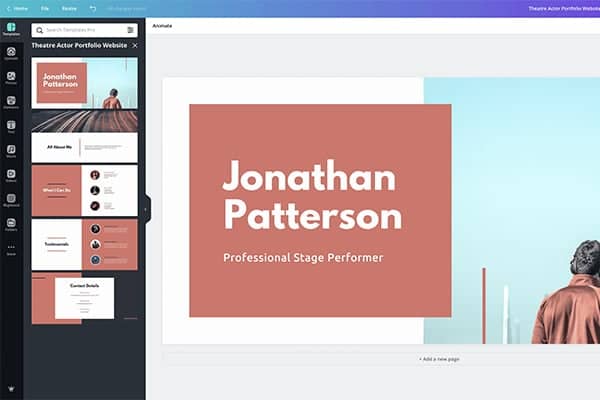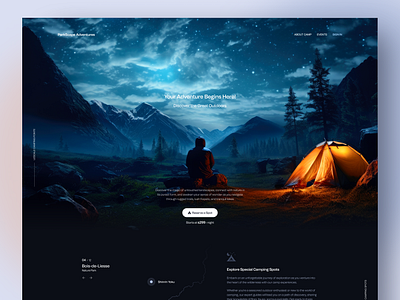Achieve Online Success With User-Friendly Website Layout
In the increasingly affordable electronic landscape, the layout of a web site can be a crucial variable in identifying a company's success. Straightforward design not only improves the total customer experience yet likewise influences crucial metrics such as engagement, conversion, and retention rates.
Value of User Experience
Customer experience (UX) plays a critical function in the success of an internet site, as it straight influences customer contentment and interaction. A favorable UX guarantees that site visitors can navigate the website effortlessly, accessibility info quickly, and total wanted actions, such as authorizing or making an acquisition up for an e-newsletter, without irritation.
In a digital landscape where competitors is intense, a website that prioritizes UX can dramatically enhance brand loyalty and retention. Users are more probable to return to a website that provides a seamless experience, creating a cycle of repeat check outs and increased client life time worth. Moreover, effective UX style can reduce bounce rates, as individuals are less likely to leave a site that satisfies their demands successfully.
In addition, search engines progressively think about customer experience aspects when ranking web sites. Hence, investing in individual experience is necessary for accomplishing long-lasting success in the electronic marketplace.
Trick Principles of User-Friendly Design
A successful straightforward design pivots on a number of vital concepts that improve usability and ease of access. Is simplicity; a clutter-free interface allows individuals to navigate effortlessly, minimizing cognitive load. This concept highlights the relevance of concise and clear web content, allowing users to find info rapidly without unnecessary distractions.
Uniformity is one more crucial component. Regular usage of designs, shades, and font styles fosters experience and constructs count on. Customers need to feel comfy as they explore various sections of the web site, knowing that comparable components symbolize related performances.
Efficient typography additionally plays a critical role in easy to use style. Understandable typefaces, proper dimensions, and ample spacing ensure that web content is quickly legible throughout different gadgets. Additionally, including intuitive visual hierarchies aids users identify key info and activities at a glimpse.

Essential Features for Navigating
Effective navigation is essential for any user-friendly website, as it straight affects the overall user experience. A well-structured navigation system enables users to locate info promptly and effectively, decreasing aggravation and enhancing engagement.
One crucial feature is a instinctive and clear menu that categorizes web content practically - website design copyright. This food selection ought to be easily accessible from every page, frequently placed at the top or on the side of the web site. Furthermore, including breadcrumb navigation assists customers recognize their location within the site power structure and makes it much easier to backtrack
Browse functionality is one more essential element, enabling customers to locate certain web content without filtering via several web pages. This attribute should be prominently shown and responsive to variations in input.
Additionally, a mobile-responsive layout makes sure that navigation continues to be smooth throughout gadgets. As mobile use remains to rise, food selections ought to adapt to different display sizes without jeopardizing capability.
Lastly, visual hints such as highlighting the active page and using hover impacts can enhance individual communication. By integrating these important attributes, web site designers can develop a navigational experience that is not only easy to use yet likewise encourages expedition and retention.
Availability Factors To Consider
Availability considerations are important to producing a straightforward website that accommodates all people, no matter of their disabilities or abilities (website design copyright). Websites should be designed to make certain that customers with aesthetic, acoustic, cognitive, or electric motor impairments can engage with material efficiently. This begins with adherence to the Internet Material Availability Standards (WCAG), which give a structure for making digital material more available
Secret techniques consist of making use of descriptive alternative message for photos, ensuring shade comparison proportions satisfy accessibility standards, and giving subtitles for multimedia elements. Furthermore, the navigation needs to be user-friendly, allowing users to tab through links and interactive aspects easily. Carrying out keyboard navigation is important for those incapable to make use of a mouse.
Additionally, succinct and clear language enhances comprehension for individuals with cognitive limitations. Types should be straightforward, with labels and instructions that are very easy to comprehend. Routine access screening, consisting of customer responses from people with specials needs, can aid determine barriers and boost use.
Measuring Layout Success

Individual feedback surveys and functionality testing are essential in examining the effectiveness of design elements. These methods permit designers to collect direct input from customers, recognizing pain factors and areas for enhancement. Furthermore, tracking heatmaps can look at this website expose where individuals click most often, assisting to educate layout modifications and content prioritization.
Google Analytics can track customer habits, disclosing patterns that indicate whether the design is hindering the customer or helping with journey. Inevitably, a successful website style not just meets service purposes but additionally fosters a satisfying and smooth customer experience, driving interaction and commitment over time.
Verdict
Finally, easy to use site style is extremely important for achieving online success. Prioritizing user experience via simpleness, intuitive navigating, and effective responses mechanisms not only boosts user involvement and satisfaction yet likewise fosters brand commitment. Integrating important navigating attributes and ease of access factors to consider additionally makes certain that all customers can successfully engage with the site. Inevitably, gauging style success gives valuable understandings that assist continual renovation, strengthening a strong online presence in a competitive electronic landscape.
Websites should be created to make certain that customers with aesthetic, auditory, cognitive, or electric motor impairments can engage with material properly.Measuring layout success includes assessing exactly how efficiently a web site meets its designated goals while supplying a favorable user experience. Google Analytics can track user behavior, revealing patterns that indicate whether the layout is facilitating or preventing the customer trip. Ultimately, an effective website design not just satisfies company goals however additionally promotes a seamless and enjoyable customer experience, driving interaction and commitment over time. Focusing on individual experience via simplicity, user-friendly navigating, and effective comments mechanisms not just boosts customer involvement and satisfaction yet his comment is here additionally promotes brand name commitment.
Comments on “The Ultimate Guide to Finding the Best Website Design in copyright Agencies”